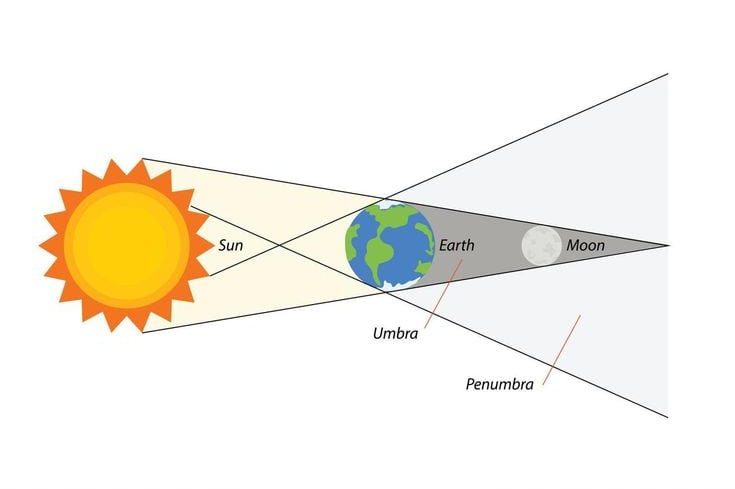Syzygy: When the Cosmos Aligns in Celestial Harmony
Unveil the extraordinary power of cosmic alignment, where planets and stars unite in perfect harmony. Witness the awe of the universe’s seamless coordination.
CURIONIS


In the silent vastness of space, there are moments when the heavens conspire to create a rare and magnificent spectacle—syzygy (pronounced siz-uh-jee). This astronomical term, derived from the Greek word syzygia meaning "union" or "yoked together," describes the alignment of celestial bodies along a straight line. Whether involving the Sun, Moon, and Earth during eclipses or the simultaneous clustering of planets along the ecliptic, syzygy remains one of the most enchanting phenomena observable from our small corner of the universe.
The Science Behind Syzygy
Syzygy occurs as a result of celestial mechanics—when the orbits of heavenly bodies synchronize in such a way that their positions form a geometric alignment. While the most well-known instances involve eclipses, planetary alignments also capture our collective imagination. The mechanics vary depending on the type of syzygy:
Solar Syzygy (Solar Eclipses): The Moon interposes itself between Earth and the Sun, partially or completely obscuring the Sun’s light. This alignment results in the dramatic phenomenon of a solar eclipse, ranging from partial to total.
Lunar Syzygy (Lunar Eclipses): The Earth positions itself between the Sun and the Moon, casting a shadow on the Moon's surface. During a total lunar eclipse, the Moon often takes on a reddish hue due to Earth’s atmosphere scattering sunlight—a sight poetically referred to as the "Blood Moon."
Planetary Syzygy: When planets such as Venus, Mars, Jupiter, and Saturn align, they form a breathtaking celestial arc. While these alignments are not always perfectly linear, their grouping along the ecliptic creates a visual sense of cosmic order.
Cultural Significance of Syzygy
Throughout history, syzygy has been imbued with mystical and symbolic meanings.
In Hindu mythology, eclipses are attributed to the cosmic enmity between the demon Rahu and the Sun and Moon, emphasizing themes of duality and balance. Rahu is a demon who symbolizes chaos and disruption. According to the Puranas, during the churning of the cosmic ocean, Rahu deceitfully consumed a portion of the nectar of immortality. The Sun and Moon exposed his deception to Vishnu, who severed Rahu’s head with his discus. However, Rahu's immortal head and his dismembered body, Ketu, continue to exact revenge by periodically swallowing the Sun and the Moon, creating solar and lunar eclipses. This tale represents the perpetual cosmic conflict between light and shadow, truth and illusion, emphasizing duality and the balance inherent in the universe’s design.
For the ancient Maya, the sky was a cosmic clock, and planetary alignments played a crucial role in their understanding of time and space. These alignments were integrated into their intricate calendar systems, including the Tzolk’in and Haab. The Tzolk’in was a 260-day sacred calendar used for ceremonial and spiritual purposes, while the Haab was a 365-day solar calendar that closely aligned with agricultural cycles. The Mayans believed that celestial events marked significant transitions—both earthly and divine. Planetary syzygies were not random occurrences but rather deliberate movements of gods across the heavens, signifying order and rhythm in the universe.
In Western traditions, syzygy has often been seen as an omen of transformation, foretelling events of great significance. During the Middle Ages, eclipses and planetary alignments were thought to influence earthly affairs, signalling the rise and fall of kings, the outbreak of plagues, or the advent of divine judgment. Astrologers interpreted these celestial configurations as cosmic messages, reflecting the interconnectedness of the heavens and human destiny. Even in modern times, syzygy retains a sense of mystery and power, reminding us of humanity’s enduring fascination with the skies as a source of guidance and revelation.
These interpretations reveal a profound human tendency to see syzygy as more than a physical phenomenon—a bridge between the material and the divine.
The cosmos is always in motion, and celestial alignments continue to inspire. Here are some notable upcoming syzygies and their significance:
March 14, 2025 – Total Lunar Eclipse:
A striking "Blood Moon" will occur as the Earth’s shadow bathes the Moon in hues of red. The Moon appears red during a total lunar eclipse, often called a "Blood Moon," because of a phenomenon known as Rayleigh scattering and the Earth's atmosphere acting as a lens.
As sunlight passes through the Earth's atmosphere, shorter wavelengths of light, like blue and violet, scatter in all directions (the same reason the sky appears blue). The longer wavelengths, like red and orange, are less scattered and pass through, reaching the Moon's surface. This refracted light bathes the Moon in a reddish hue, creating the dramatic and ethereal appearance of a "Blood Moon." Atmospheric conditions, such as dust or pollution, can intensify or alter the shade of red seen.
Visible across parts of the Americas, Europe, Africa, and Asia, it’s a chance to witness the alignment of Earth, Sun, and Moon.
March 29, 2025 – Partial Solar Eclipse:
The Moon will partially obscure the Sun’s disk, casting shadows over regions including parts of the United States, Greenland, and Europe.
September 7, 2025 – Total Lunar Eclipse:
Another opportunity to experience the interplay of shadows and light, showcasing the alignment of the Earth, Moon, and Sun.
September 21, 2025 – Partial Solar Eclipse:
This partial eclipse will be visible in select regions, adding another layer of intrigue to the year’s astronomical events.
The Current Celestial Dance: January 2025
At this very moment, the heavens are staging a remarkable planetary alignment. Venus, Mars, Jupiter, and Saturn are gracing the skies in a harmonious arc. Though not a perfect syzygy, this planetary parade offers a visual treat that highlights the interconnected nature of our solar system.
How to Observe It:
Timing: Look westward shortly after sunset.
Tools: Use binoculars or a telescope to spot Saturn’s rings, Jupiter’s moons, or the reddish glow of Mars.
Location: Find a dark area away from city lights to fully appreciate the celestial spectacle.
The Symbolism of Syzygy
Syzygy carries profound symbolic meaning beyond its scientific implications. It reflects balance, unity, and the cyclical nature of existence. When celestial bodies align, they remind us of the intricate order governing the universe, a harmony mirrored in our own lives.
These alignments are fleeting, lasting mere moments in the grand timeline of the cosmos. Yet, their impact is enduring, inspiring wonder, curiosity, and reflection. Each syzygy is a reminder that we are part of a greater cosmic story—a story of motion, balance, and interconnectedness.
As you gaze upon the sky during this planetary alignment or the next eclipse, take a moment to marvel at the profound beauty of syzygy. These celestial events are more than astronomical phenomena; they are glimpses into the universe's eternal choreography. They invite us to look upward and inward, to find a connection in the vastness and meaning in the alignment of worlds.
Let syzygy remind us that even in a universe of unimaginable scale, there is a rhythm—a dance that unites the heavens and Earth in timeless harmony.
Subhalakshmi Buragohain
Hyderabad
A fleeting moment of celestial brilliance: the diamond ring effect during a solar eclipse.


Embraced by Earth's shadow, the Moon transforms into a celestial masterpiece. Diagram showing Lunar Eclipse on Earth.


The Moon blushes as the universe gazes on: A Blood Moon
